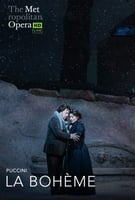The Fragile Fire of Youth Snow drifts against the Paris rooftops, candles sputter in a draft, and...
Madama Butterfly by Puccini — Love, Illusion, and the Echo of a Distant Shore
 Opening Scene: The Sound of Hope
Opening Scene: The Sound of Hope
It begins in sunlight. Nagasaki glows with the restless shimmer of the early 1900s—harbor bells, sea wind, and the faint hum of a world colliding with modernity. A young geisha named Cio-Cio-San—nicknamed Butterfly—believes she’s found freedom in love. Her new husband, an American naval officer named Pinkerton, sees only an exotic escape, a temporary pleasure. From the moment the orchestra sighs beneath her first entrance, we feel the ache of something fragile and fated. Puccini knew how to lace beauty with heartbreak. In Madama Butterfly, he composed one of opera’s most devastating illusions: the belief that love can rewrite the terms of power, culture, and destiny.
The Historical and Musical Context
When Madama Butterfly premiered at La Scala in 1904, it was a disaster—boos, hisses, and open laughter. The audience found it overwrought and foreign. But Puccini, convinced of its power, quietly reworked the opera, deepening Butterfly’s character and tightening the drama. Within months, the same work triumphed in Brescia and swept across Europe. What audiences eventually recognized was a masterpiece of intimacy—a story told in half-tones, silences, and suspended harmonies that capture both the delicacy of Butterfly’s hope and the cruelty of her disillusionment.
Puccini drew inspiration from the real accounts of Japanese women abandoned by Western men during the Meiji period, blending authentic Japanese melodies with his signature Italian lyricism. The result is a score that never caricatures—it listens. The haunting “Humming Chorus” that closes Act II floats between prayer and despair, and “Un bel dì, vedremo” (“One Fine Day”) remains one of opera’s most transcendent arias—an act of faith sung into the void.
A Story of Devotion and Deception
Cio-Cio-San is only fifteen when she marries Pinkerton. To her, the ceremony is sacred; to him, a contract of convenience. While he sails away promising to return, she transforms her house into a shrine of waiting, her loyalty burning against the indifferent march of time. Three years pass. When he finally returns, it is with an American wife. The truth arrives not as thunder but as silence—Puccini’s orchestra folds into stillness as Butterfly’s world collapses.
In the opera’s final scene, she blinds herself with her father’s dagger, her child sleeping nearby, the dawn breaking with merciless calm. It’s not only the death of a woman—it’s the death of her dream that love could bridge nations, faiths, and power.
Modern Resonance
Over a century later, Madama Butterfly still unsettles us. Its beauty is undeniable; its themes, uncomfortable. What does it mean to watch a woman destroyed by the very ideals—romance, loyalty, faith—that culture once taught her to revere? And how do we reconcile the opera’s Western lens on an Eastern story?
Many modern productions confront these questions head-on, reframing Butterfly not as victim but as witness. Directors now explore her agency, her resilience, and the colonial gaze that shaped her tragedy. The Met’s 2024 revival, broadcast in The Met: Live in HD, did just that—offering a visual world that respected Japanese aesthetics while unmasking the historical inequities beneath them.
Puccini’s music remains our mirror: lush, seductive, and uncomfortably beautiful, forcing us to ask whether we are moved by empathy or complicity.
Humor Amid Tragedy
It’s hard to find levity in Butterfly, yet perhaps the opera’s slyest irony comes early, when Pinkerton brags to the American consul about “renting” his Japanese bride and house. “Yankee Doodle,” he quips, “always gets what he wants.” One imagines Puccini, pen in hand, raising an eyebrow at such bluster—writing music that would one day expose its emptiness.
Closing Reflection
Madama Butterfly is not merely a love story—it’s an autopsy of one. Beneath its exquisite melodies lies a meditation on illusion: the illusion of cultural understanding, of power disguised as affection, and of love that expects gratitude instead of equality. That Butterfly still sings—so purely, so painfully—after all these years is a testament to Puccini’s understanding of the human heart: that hope endures even when it shouldn’t, and beauty often outlives justice.
Opera Insight
During The Met: Live in HD broadcast, soprano Asmik Grigorian’s portrayal of Butterfly drew standing ovations. She famously requested her kimono be sewn with hidden pockets—to keep a small packet of tissues for Act III. Even the strongest voices, it seems, need something soft to fall back on.
Friends of the Opera is dedicated to making opera accessible, educational, and inspiring for everyone in our community. If you enjoy reading the Friends of the Opera blog, including Arias and Insights, please consider signing up for a membership or providing a donation of support: Learn More



